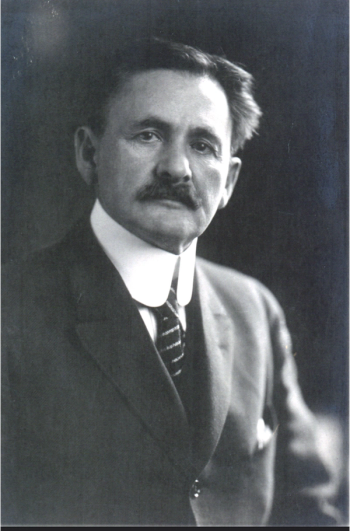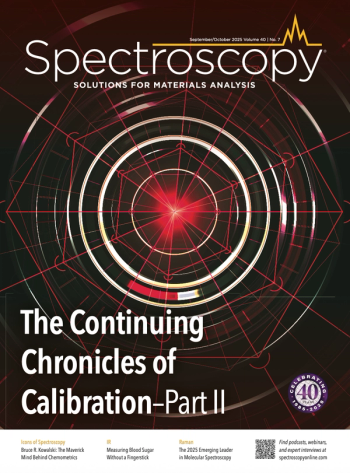
FT-IR Spectroscopy Offers Faster, More Accurate Dough Analysis
Key Takeaways
- FT-IR spectroscopy, combined with PLSR, accurately predicts dough-making characteristics, outperforming traditional methods and genetic predictive analysis.
- The study demonstrates FT-IR's effectiveness in predicting protein content, water absorption, and dough extensibility, crucial for baking performance.
A recent study explores how Fourier transform infrared (FT-IR) spectroscopy can be used to predict key dough-making characteristics.
In recent food analysis, researchers have experimented with using statistical modeling along with spectroscopy to test the quality of various food products entering the market. A recent study led by a group of researchers from The University of Western Australia evaluated wheat flour quality using Fourier transform infrared (FT-IR) spectroscopy to predict key dough-making characteristics with improved accuracy (1). The study, led by Nicolas L. Taylor, represents a leap forward for Australia’s wheat industry, which has long sought non-destructive, field-ready tools for evaluating the dough-making potential of new wheat varieties (1).
What factors go into wheat selection?
There are several wheat varieties out there, and that makes it occasionally challenging in conventional breeding programs which types of wheat to choose (2,3). Instruments, such as extensographs and farinographs, test wheat varieties to measure dough characteristics like elasticity, resistance, and development time. These are all critical factors that determine bread quality (1). The problem with these tests is that they are not cheap to conduct, and they require a lot of time (1). Ultimately, this results in limiting the amount of wheat lines that can be evaluated in each breeding cycle (1).
How did the researchers use FT-IR spectroscopy in their study?
In their study, the researchers used FT-IR spectroscopy to measure the infrared (IR) light absorbed by molecular bonds in the wheat samples. Collecting the data, the researchers then integrated partial least squares regression (PLSR) to extract predictive relationships between the spectral data and physical properties, which helped the researchers create highly accurate prediction models for multiple aspects of dough-making quality (1).
What were the results of the study?
The researchers found that the PLSR models were effective at predicting protein content, water absorption, dough development time (DDT), extensibility, and maximum resistance to tension (Rmax) using FT-IR data (1). They also found that the precision levels were comparable to or exceeding traditional testing methods. Even more impressively, FT-IR-based predictions outperformed genetic predictive analysis, which is a widely used approach that estimates dough quality from genomic markers (1).
One notable comment made in the study was that FT-IR spectroscopy was particularly effective for predicting attributes such as protein content, extensibility, DDT, and water absorption (1). These traits directly influence dough performance during baking and processing. Although the models showed slightly lower accuracy for parameters like Rmaxand dough stability, the researchers noted that the technique remains powerful enough for preliminary screening and quality control (1).
What are the key takeaways from this study?
There are some important takeaways from this study. For one, the study demonstrates that the integration of FT-IR, Raman, and early-stage genomic analysis could ultimately allow breeders to identify promising wheat lines much earlier in the development process. This could potentially have positive externalities such as reducing costs, accelerating selection cycles, and improving the overall efficiency of wheat improvement programs (1).
Ultimately, the study demonstrates that advanced, data-driven spectroscopic approaches can fundamentally change how food scientists evaluate quality and performance traits (1). Because the Australian wheat industry plays a vital role in global grain exports, the method proposed here could help the country continue to ensure that their wheat products are of the highest quality.
As the authors write in their study, the results “suggest that FT-IR spectroscopy has the potential to be used in combination with current predictive analysis techniques, such as genomic analysis, to provide more informed decisions early in the wheat breeding process on the viability for wheat lines to be selected for further dough rheology analysis, as well as be used alongside dough rheology measurements to improve the accuracy of dough quality testing” (1).
References
- Kelly, J. M.; Bohman, B.; Bennett, D.; Taylor, N. L. Rapid Dough Making Quality Analysis of Wheat Flour Using Fourier Transform Infrared Spectroscopy and Chemometrics. Food Chem. 2025, 475, 143335. DOI:
10.1016/j.foodchem.2025.143335 - LaPorte, J. Seed Selection: Beyond Yield and Disease Resistance (Wheat Edition). MSU.edu. Available at:
https://www.canr.msu.edu/resources/seed-selection-beyond-yield-and-disease-resistance-wheat-edition#:~:text=Selecting%20the%20right%20seed%20for,well%20adapted%20to%20various%20climates . (accessed 2025-11-12).
Newsletter
Get essential updates on the latest spectroscopy technologies, regulatory standards, and best practices—subscribe today to Spectroscopy.





